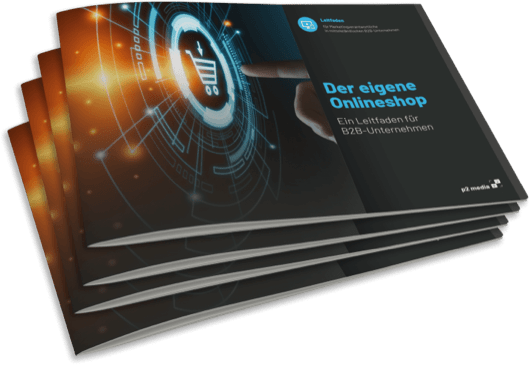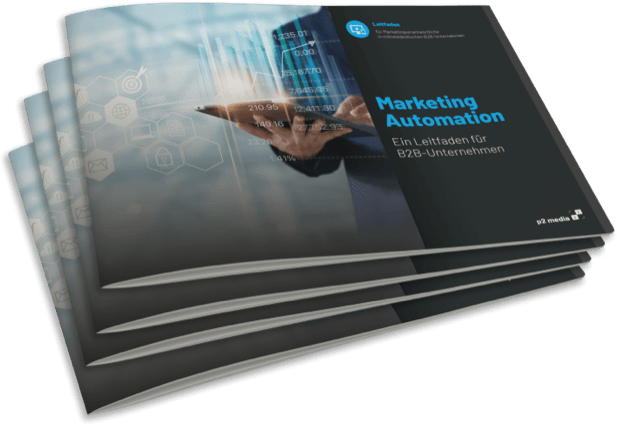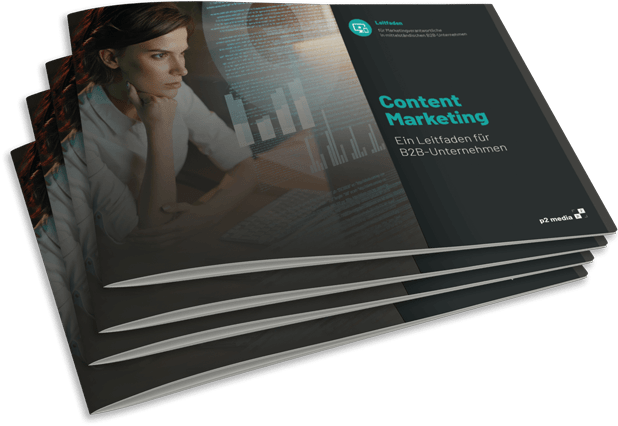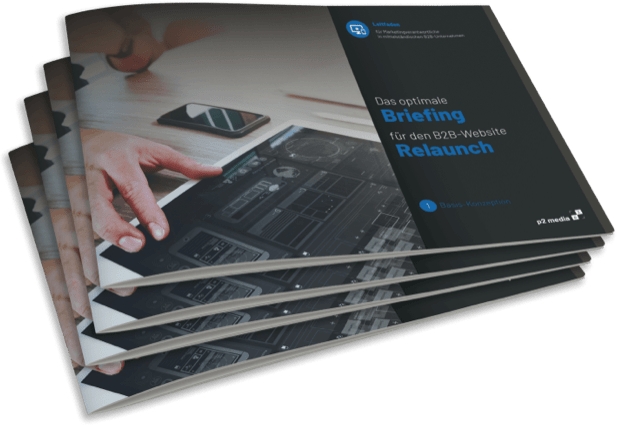They are a fundamental part of the latest Google update: The Core Web Vitals. The page experience becomes the official ranking factor.
The primary goal of the search engine is to offer users the best search result for their needs. As of June 2021, "the best search result" will be defined by additional factors. The user experience is now also relevant for Google, which is why more attention will be paid to good usability and security of the website in the future.
Learn how exactly web vitals affect SEO, with which strategy you now have to react and, of course, exactly which factors make up the web vitals.
What are Web Vitals
The Core Web Vitals - often referred to as Web Vitals - are metrics that help Google, on the one hand, but also website operators, to classify and optimize the user experience and user friendliness of pages.
They form part of the Google Page Experience Update and are combined with other metrics relating to user experience to form the ranking factor of page experience.
In addition to the Google Core Web Vitals, the focus is on mobile friendliness (Mobile Friendly), website security (Safe Browsing) as well as encryption (HTTPS) and usability that is as uninterrupted as possible (No intrusive Interstitials).
In detail, the Web Vitals refer to the page speed (Largest Contentful Paint - LCP), the responsiveness (First Input Delay - FID) and the visual stability (Cumulative Layout Shift - CLS) of a website.
What impact do Google Core Web Vitals have on SEO?
It is fundamentally very advantageous to incorporate Web Vitals into one's SEO strategy. Companies that fully adopt corresponding metrics at an early stage have enormous competitive advantages over companies whose websites are not yet in line with the pulse of the times.
Although the page experience described above occurs primarily on a technical level, content strategy is not completely unaffected. After all, content alignment also affects load time, responsiveness, and visual stability.
Nevertheless, a website with a weak page experience but particularly strong added value in terms of content can of course still end up in one of the first places. However, if there are two pages with similar content, the page with the better page experience will probably take a higher position.
It is therefore important to consider the Google ranking factor Page Experience and the Web Vitals when optimizing your own search engine ranking in any case.
How and where can you measure your Web Vitals?
Google itself offers various tools that can be used to measure the Web Vitals. Such a determination forms the basis for any efficient SEO of the Core Web Vitals. In detail, the following options are available:
- Google Search Console
- Google PageSpeed Insights
- Google Lighthouse
- Chrome UX Report
- Chrome Dev Tools
- Web Vitals Extension
The easiest and at the same time very informative way is to use the Google Search Console, because there you can directly access the KPIs of the Core Web Vitals. The Google Search Console displays a clear overview for the respective domain and shows the status of the URLs with color markings:
Green: URL is OK Yellow: The URL should be optimized if possible.
Red: Bad alignment of the URL
The data on which this report is based is based on real user experiences in Chrome.
What do the KPIs of the Web Vitals mean exactly and how can you optimize the page experience concretely
Google Core Web Vitals are derived from real user data and currently include three metrics, defined as follows:
LCP is about the loading time of the pages.
As a basis, it is measured how long it takes until the largest element of the content of a page is loaded. Values of up to 2.5 seconds are good.
However, values of 2.5 to 4 seconds should be optimized. Anything beyond 4 seconds is considered bad. Possible search engine optimization for LCP
FID concerns the time that elapses between the primary interaction of a user with a page, such as a click, to the reaction of the respective browser used to the interaction.
According to Google, values up to 100 milliseconds are good. At 100 and 300 milliseconds it is recommended to optimize - and from 300 milliseconds a bad value is present. Possible search engine optimization for FID
CLS focuses on the website layout - but for once not in terms of speed, but in the context of the stability of the layout when using a page.
It is not at all uncommon for there to be delayed shifts in the layout during the process of loading a website. As a result, users may click on an area that they did not intend to select.
Ideal CLS values are equal to or lower than 0.1. Between 0.1 and 0.25 there is room for improvement - anything higher is bad. Possible search engine optimization for CLS
If a website runs on slow and or inadequately set up servers, even the best onpage SEO can't reach its potential.
In addition to fast servers, Google recommends using a framework instead of a complete HTML file, with the help of which far more dynamic content is sent to the browser.
It can also help to proceed with a content delivery network (CDN) and to rely on efficient caching and the earliest possible establishment of third-party connections.
Browsers cannot actually render content elements and make them usable for users until the HTML markup has been parsed into a Document Object Model (DOM).
However, the HTML parser stops every time CSS stylesheets or JavaScripts are loaded. Google recommends here to compress CSS or JavaScript.
Furthermore, non-critical styles or scripts should be moved and critical CSS should be set inline.
Large content very often leads to loading delays.
Google therefore recommends implementing different content formats in precisely fitting sizes and always using file formats with high compression, such as WebP for images.
In addition, Gzip compression of HTML, CSS, and JavaScript is usually very helpful. Adapting serving can also lead to success.
To ensure a good user experience at all times and to ensure that the website is continuously displayed well, it is advisable to define clear width and height specifications for images and videos.
An aspect ratio via CSS can also help. This way, the browser keeps the exact required space for corresponding elements free while they are being loaded.
According to Google, ads are one of the most common reasons for layout shifts on pages due to their often dynamic sizes.
Other dynamic content in the form of banners, related content blocks or DSGVO notices in the main content can also lead to layout shifts.
This can be avoided with a placeholder element for such content.
The Core Web Vitals are rated differently on desktop and mobile
As recently confirmed by John Mueller (Senior Webmaster Trends Analyst at Google), the Core Web Vitals are differentiated in the rating between desktop and mobile.
Thus, the evaluation of desktop representations has no effect on the mobile ranking - just as the other way around.
Thus, neither a disadvantage can be drawn from the other values, nor can it be profited from.
How to prepare your website optimally for the Web Vitals
The Core Web Vitals announce themselves as the future central metrics for the evaluation of the user experience.
Google relies on a really detailed documentation and the search engine leader defines very clearly what the individual KPIs mean. Additionally, helpful tips for optimization are provided.
Those who have not yet done so should now check their own websites with the help of one of the Google tools regarding the coverage or quality of the Core Web Vitals and act accordingly.
However, the Web Vitals should not be overrated either. In fact, two of the three metrics are not new:
- FID and LCP have been forming important ranking factors for quite some time and many website owners are likely to at least work in the right direction here - if they do SEO strategically. However, by including them in the Google Core Web Vitals, their relevance will increase, which means that a differentiated adoption for one's own pages can be significantly worthwhile.
- CLS did not exist until now. Accordingly, this is where most of the unique selling proposition potential should lie dormant. Those who optimize for this metric will tend to outperform their competitors on Google.
Unsere Learnings:
- Thanks to Google Core Web Vitals, it is possible to carry out effective search engine optimization by means of specific KPIs that pay particular attention to the user experience.
- Metrics can also be used to illustrate which problems exist and which concrete measures can be taken to remedy them - SEO has rarely been so transparent.
Our support around the topic of search engine marketing
- Analysis of how you perform from the perspective of the search engine and what reputation your pages have.
- Development of anSEO strategy for your website or online shop.
- SEO site check as a status analysis to uncover technical errors and create a basis for necessary onpage optimizations.
- SEO-compliant text creation- conception of content that is classified as relevant by both your target groups and the search engine.
For holistic and successful online marketing, we are also happy to take care of the following topics:
Oliver Parrizas will be happy to answer any questions you may have on the subject. +49-800-911-91-91













